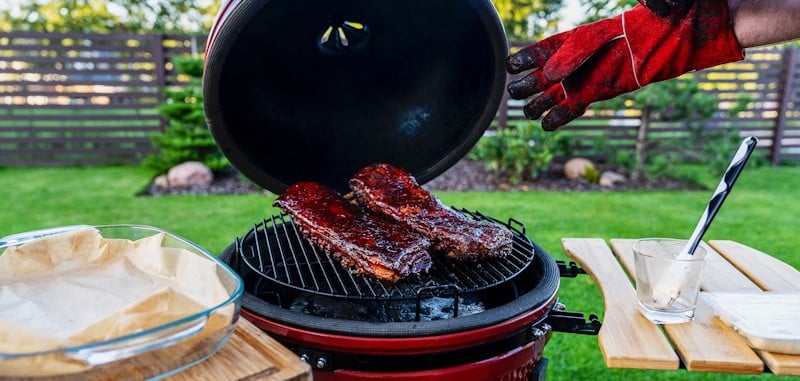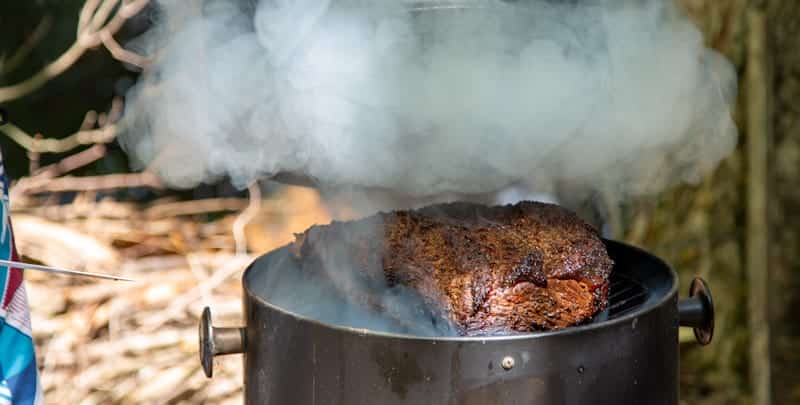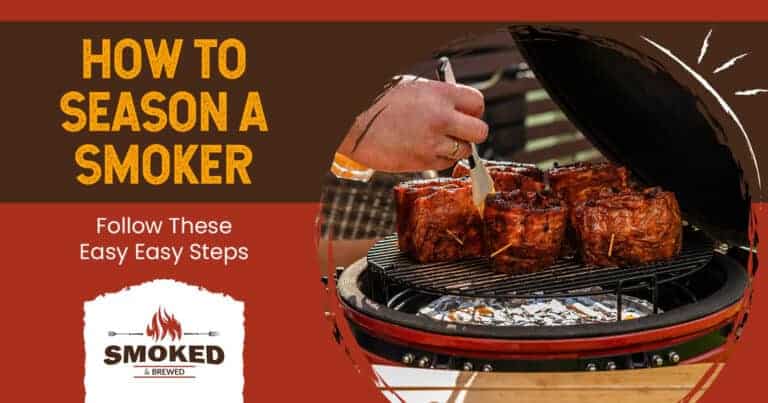Did you just purchase a barbeque? Before starting your culinary journey, there is an indispensable need to season a smoker. Seasoning lays the foundation for perfectly smoked food and is quite an easy process. Besides various other benefits, seasoning a smoker prevents the chances of burning, improves flavor, and removes traces of contaminants from the food.
To season or cure a smoker, apply a coat of oil or cooking spray to the inside of a thoroughly cleaned smoker. Depending upon the type of smoker, burn it at high temperatures (for 225 to 300 ℉) for at least 2-4 hours so that there are no residues left on the surface and the smoker is ready to use.
Unlike sprinkling salt and pepper in cooking, the term ‘seasoning’ here means to apply a coat of oil and heat it at high temperatures for several hours. Proper seasoning can exceptionally enhance the taste of smoked food and also improve the lifespan of the smoker. Here’s all you need to learn about the easy steps to effectively season a smoker or a grill:

Why Do You Season A Smoker
Seasoning (also known as curing or pre-seasoning) is a must-do process before you start cooking food on a new smoker. The oil adds a protective seal and improves the performance of the smoker. The following are some of the important reasons for seasoning a smoker:
Removes Manufacturing Ingredients
A brand new smoker is boxed with lots of manufacturing leftovers such as paint, solvent, adhesives, and oils. These chemical ingredients not only add an unpleasant flavor to the food but are also toxic when consumed. Seasoning helps in getting rid of these unpleasant toxic metal leftovers.
Prevents Burning Of Food
The chemicals or the leftover food particles increase the chances of producing burnt food. However, a well-seasoned smoker would have minimal chances of producing burnt or unpleasant tasting food.
Extends The Life Of The Smoker
Not all smokers have rust-proof surfaces. A smoker is usually made of stainless steel or iron body, which is vulnerable to corrosion or rusting when exposed to air and moisture. Even when a smoker has a protective coating, seasoning adds another layer that prevents moisture from coming in contact with the metal surface. This helps in extending the life of the smoker by giving it a rust-proof layer of coating.
How To Season A New Smoker
Seasoning a smoker for the first time isn’t similar to seasoning a cast-iron skillet. The tools and materials required to season a new smoker are – rag or paper towel, delicate dish soap or a degreaser, water, grill brush, choice of wood for smoking, and most importantly – choice of oil.
The goal of seasoning is to have a thin and even coat of oil on the surface of the smoker. Here is a step by side guide on how to season a new smoker:
- Cleanse – Clean the smoker thoroughly, including the grates, racks, and pans with diluted soap and clean water to remove manufacturing grease and grime.
- Dry – Air dry the smoker until all the water evaporates from the surface.
- Oiling/ Coating the Smoker – Oiling is the most important step in seasoning a smoker. Mop a coat of oil to the inside of the smoker with the help of a grill brush or soft cloth or you can also use a cooking spray to evenly spread the oil on the inside of the smoker.
Never go overboard while applying the oil. Use only a generous amount that can evenly cover the surface and always ensure that you use a soft brush/ material to oil the smoker.
- Assembly – Before cooking, assemble different parts of the smoker as mentioned in the instruction manual.
- Cooking/ Burning – Once you have coated every crevice of the smoker, you need to cook or burn the smoker at high temperatures to finish the seasoning process. Most models recommend temperatures between 225 to 300 degrees Fahrenheit for effective curing. Cooking/burning ensures that all the trace elements and contaminants are burned off and there are no chemical residues left on the surface. Few models would recommend a lower temperature, therefore, you must read the instruction manual carefully. Electric smokers and gas burners may comparatively require fewer hours of burning than traditional smokers.
Bonus tip: To remove the unpleasant smell of the manufacturing chemicals, you can use light flavored woods, like oak, apple, or pecanwood during the smoking process. This will help replace the smell of the chemicals with the light aroma of smoked wood.
After the initial process, it is recommended that you should season the smoker at least two times a year to improve its integrity and lifespan.
How Long To Season A Smoker
For most outdoor charcoal smokers, pellet smokers, and electric smokers, the heat applied during the cooking or burning process should be for at least 2-4 hours to ensure that the oil can seep into the imperfections. Seasoning a gas smoker would require about an hour. Here is more on how to season different types of smokers:
Wood Pellet Smokers
For wood pellet smokers, fill the hopper completely with good quality wood pellets and choose high heat settings. Run the smoker for at least four hours or until all the wood pellets are completely consumed.
Electric Smokers
For electric smokers, run the smoker for at least 2-3 hours. The wood chips may be added to the smoker box towards the last 45 minutes to add a smoky flavor throughout the chamber.
Traditional Charcoal Smokers
Once the desired temperature is acquired inside the charcoal smoker, fill the smoking pan with hot coals and hardwood chunks or chips and burn the smoker until all the charcoal reduces into ash.
For Gas Smokers
Set the highest temperature of the gas smoker and run the smoker for at least an hour. Add the wooden chips towards the last thirty minutes of the smoking process.
Which Oils Can Be Used For Seasoning?
Oils with high burning points should ideally be used for seasoning. Some of the best oils for seasoning are – olive oil, canola oil, grapeseed oil, palm oil, sesame oil, avocado oil, almond oil, sunflower oil, bacon grease, etc.

Things To Keep In Mind Before Seasoning A Smoker
It is important to read the instruction manual before going forward for seasoning a brand new smoker. Here are some pro-tips to keep in mind before seasoning a smoker:
- Depending upon the model, the instruction manual may clearly mention avoiding using certain ingredients. Never use such ingredients to season the smoker.
- There is no need to treat pre-seasoned smokers unless specifically mentioned.
- Always use a clean, soft cloth to spread the oil evenly.
- For an electric smoker, avoid using oil in any of the heating elements.
- Check and remove the pool of excess oil before running the smoker.
- Unless required, frequent re-seasoning is not recommended.
Similar post: What Is The Best Propane Smoker? [Top Models Reviewed]
Post Seasoning Tips: Wrapping It Up
If properly done, the process of seasoning is not required to be repeated frequently. After every smoking session, make sure to remove all the food leftovers and ashes and partially clean the surface without damaging the oil coat. If you spot some rusting, scrape it off with sandpaper. If the surface of the smoker is explicitly damaged, you can use heat-resistant paint to close the cracks, air dry it and then follow the regular seasoning process.
Whether seasoning, cooking, or cleaning, it is important to understand how your smoker works. Besides factors like choice of wood and meat, marination, and type of smoker, a well-seasoned smoker is a crucial factor that ensures that you invariably produce the most tender and juicy smoked food at all times.
Also read:
- Old Country Gravity Fed Smoker – Best Smoker?
- How to Smoke a Brisket in an Electric Smoker?
- The Best Smoker Boxes for Charcoal Grills [REVIEWED]
Scot has loved smoking food in his free time for the last few years. Each major holiday or off-weekend, Scot spends days testing and prepping new recipes for perfection.

